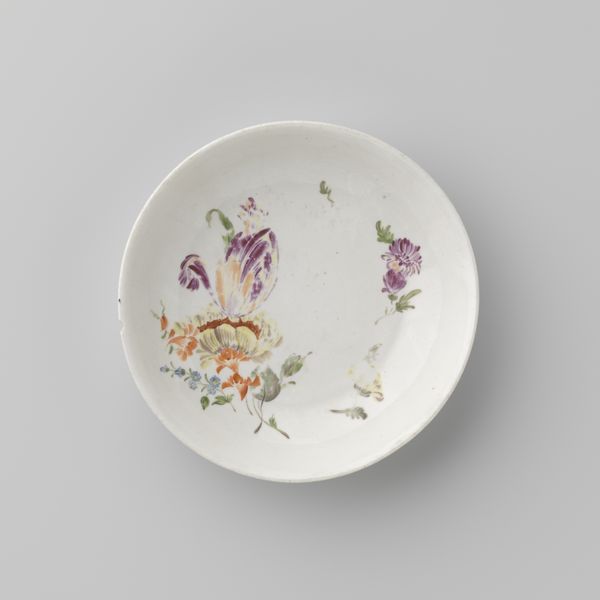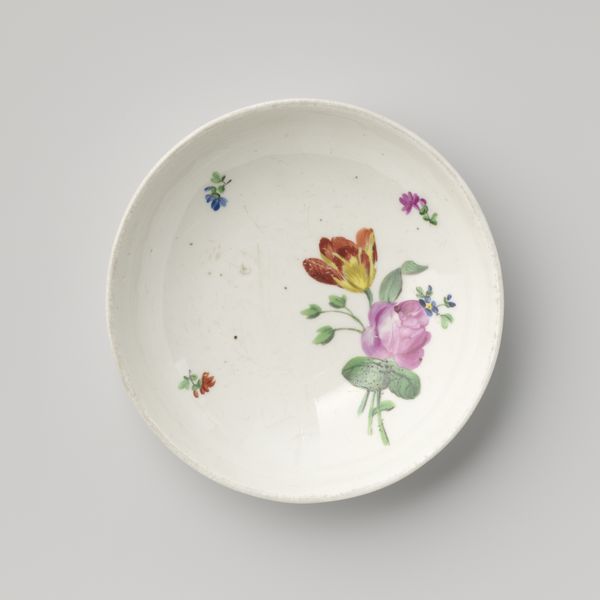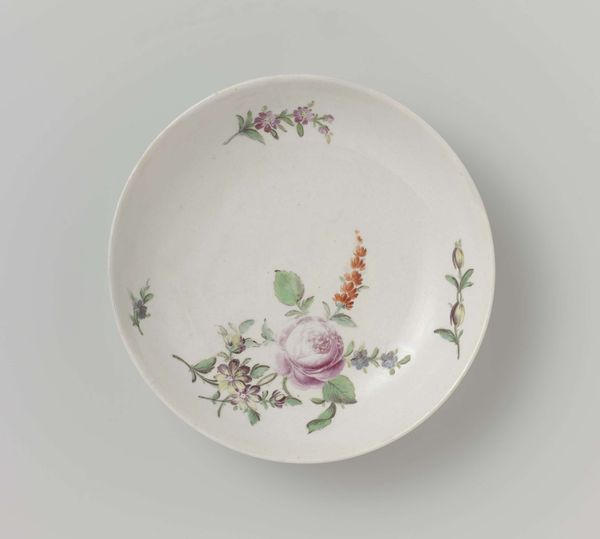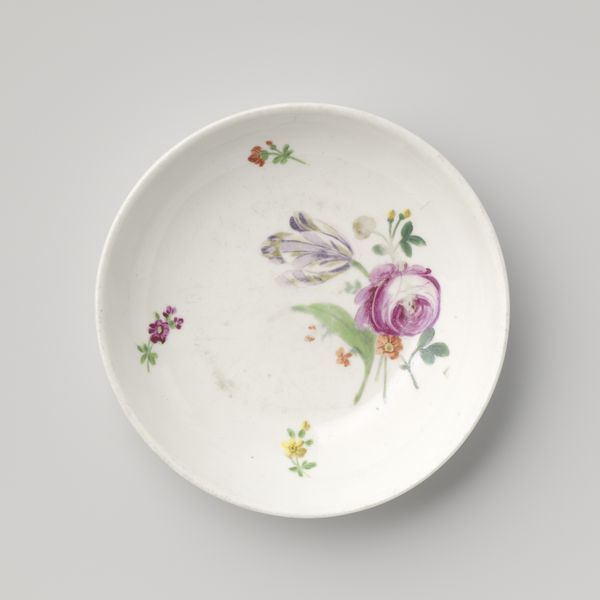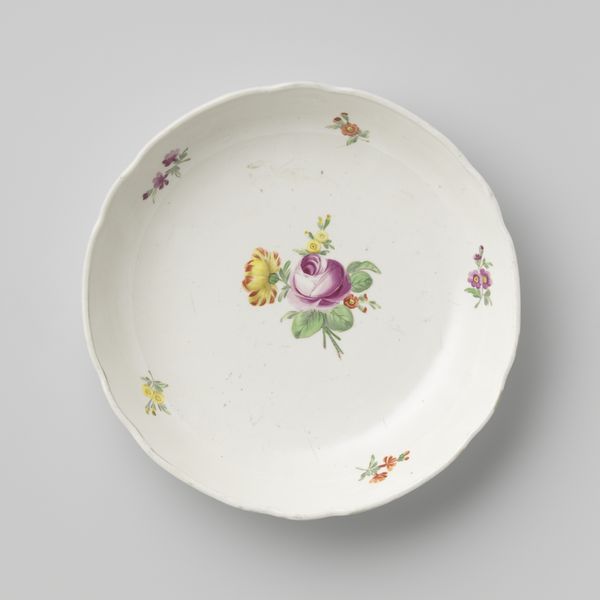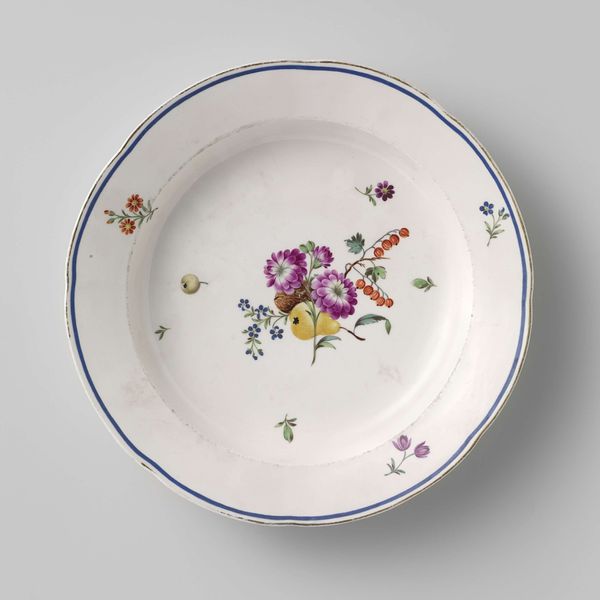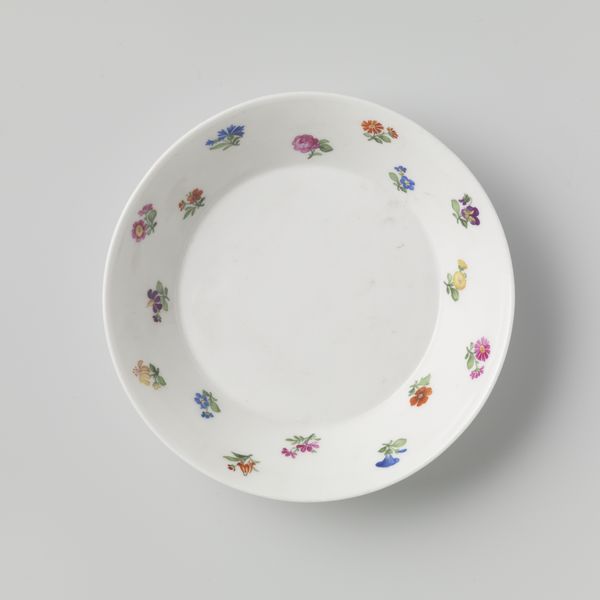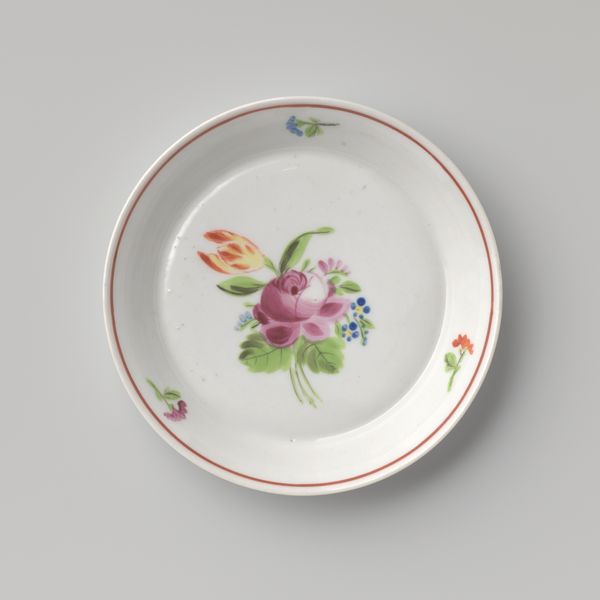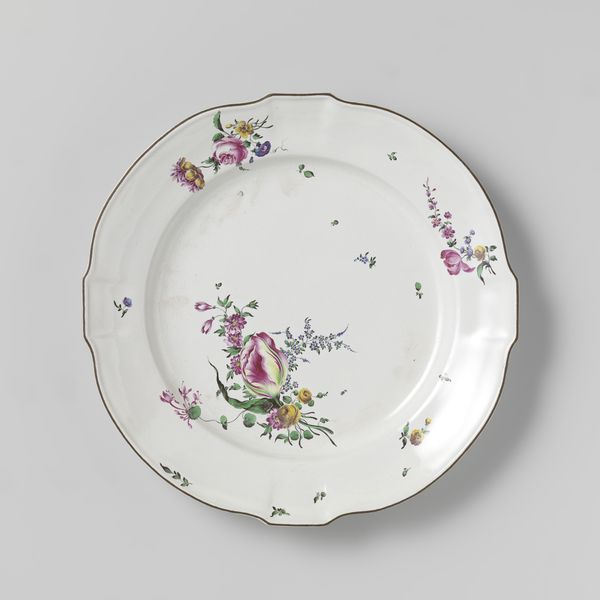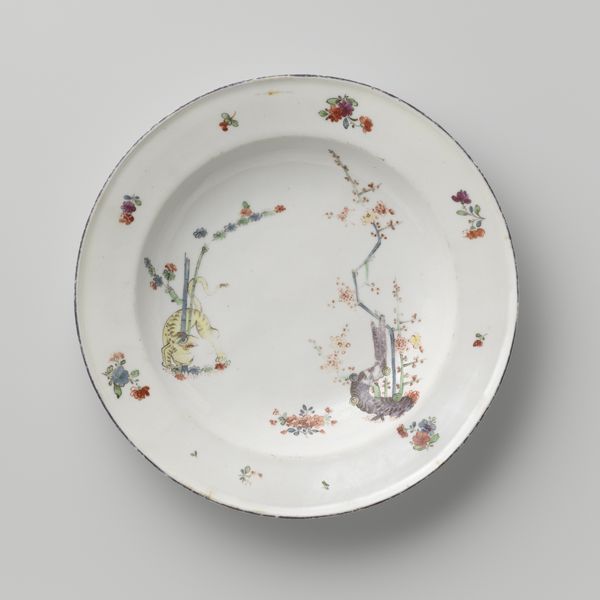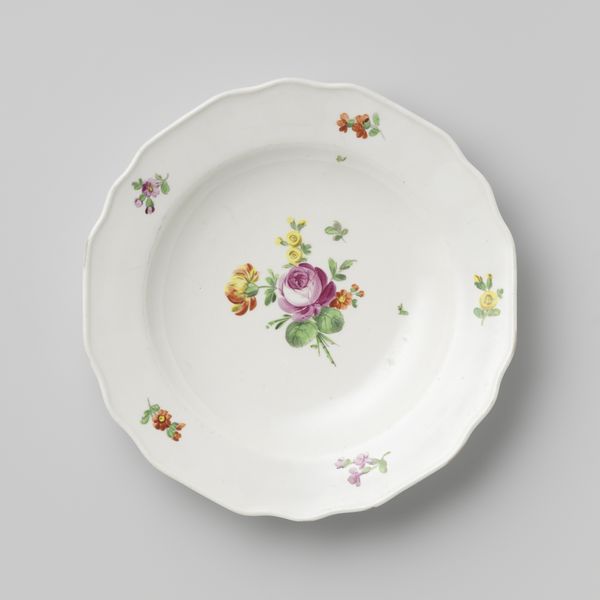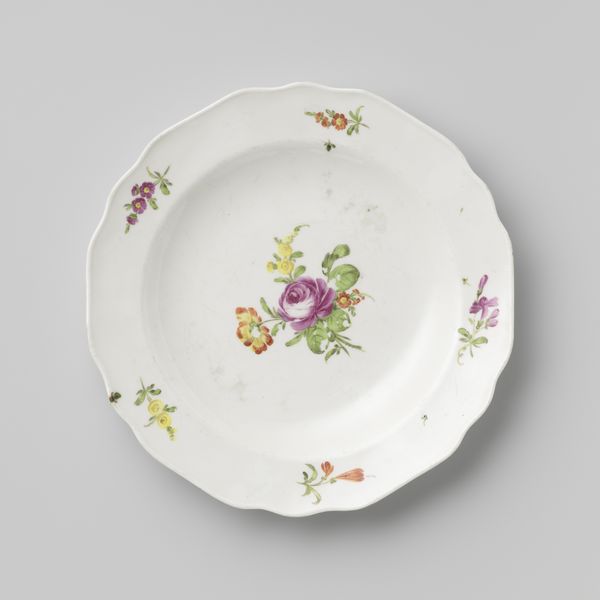
Dimensions: height 2.5 cm, diameter 13.3 cm, diameter 7.1 cm
Copyright: Rijks Museum: Open Domain
Curator: Welcome to the Rijksmuseum. We are standing before a delightful "Saucer with flower sprays", originating from Ansbach, and dating back to sometime between 1760 and 1800. Editor: It strikes me immediately as light and airy. The decoration seems almost sprinkled onto the white ceramic. What sort of context surrounds its creation? Curator: Certainly. These saucers were very popular in Europe, as tea and coffee consumption grew exponentially. This particular piece reflects the Rococo style with its emphasis on asymmetry, delicacy, and playful themes. Editor: Yes, the asymmetrical arrangement of the blossoms and foliage is noteworthy. The colour palette is restrained, primarily focused on pink, orange and green tones to allow a visual pathway around the perimeter of the saucer, which has this delicate curve with hints of light on its edge, defining its circular boundary and leading us inward, deeper into a delightful composition of blossoms and foliage. It speaks to a society of leisurely teatime! Curator: Absolutely. These weren't merely utilitarian objects; they were indicators of status, taste, and part of broader social rituals. Porcelain was a coveted material, especially when decorated with such detail. The rise of the middle class in Europe further propelled the demand for these decorative items, symbolizing their upward mobility. Editor: Note, the white field isn't just background. The interplay of empty and occupied space establishes visual cadence; negative space helps give emphasis to the colourful sprays as distinct elements in this visual ecosystem, if you will, that's constructed on this petite canvas. It emphasizes each form's individuality, it invites introspection into the structure that frames what is essentially just decorative form... Curator: A perspective which aligns, of course, to formal qualities, ignoring the cultural background in which the object becomes, indeed, a symbolic social statement. So, how does this alter your understanding of this petite ceramic art piece, with this deeper contextual consideration? Editor: Perhaps it tempers my enthusiasm a bit, to know this isn't mere fancy but has this material signalling imbedded as part of its form. Still, whatever forces formed it, the saucer remains a charming fragment, frozen in history, to this very day. Curator: And it seems the debate continues if it's about surface analysis and structural exploration, or, as you note, the social status, and its place in the society. In that debate, a painting on a canvas remains richer than a flower on a little, functional bowl!
Comments
No comments
Be the first to comment and join the conversation on the ultimate creative platform.

